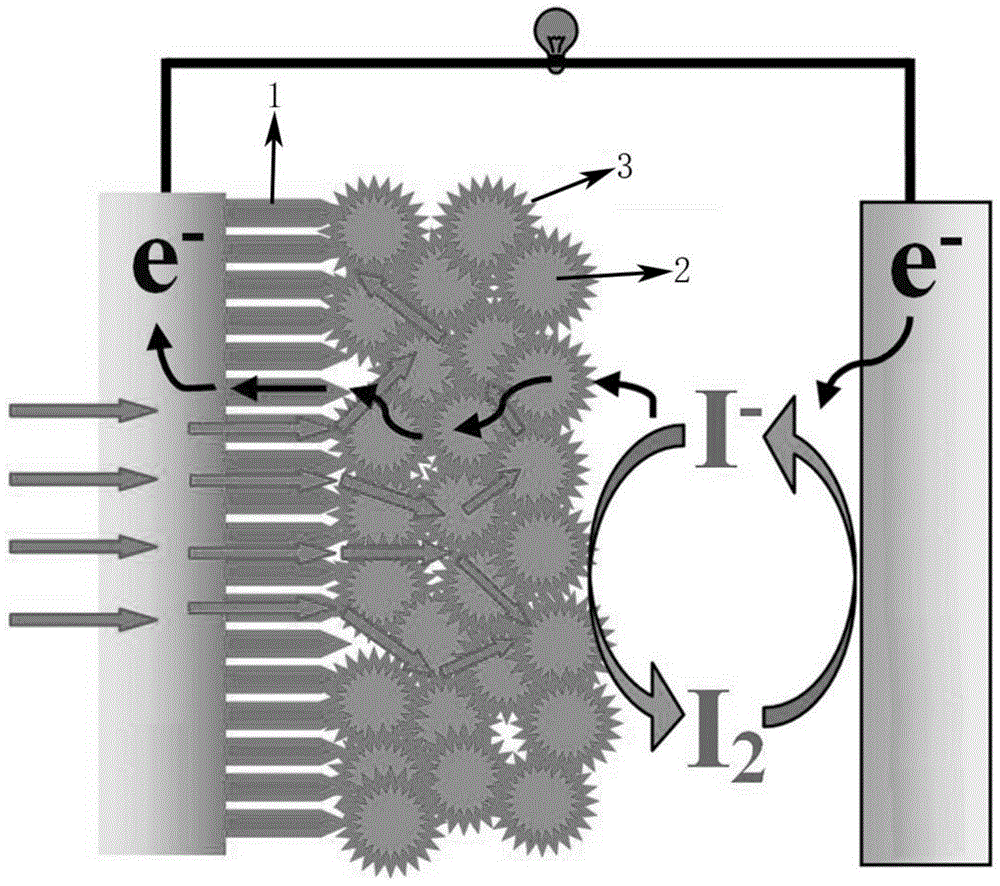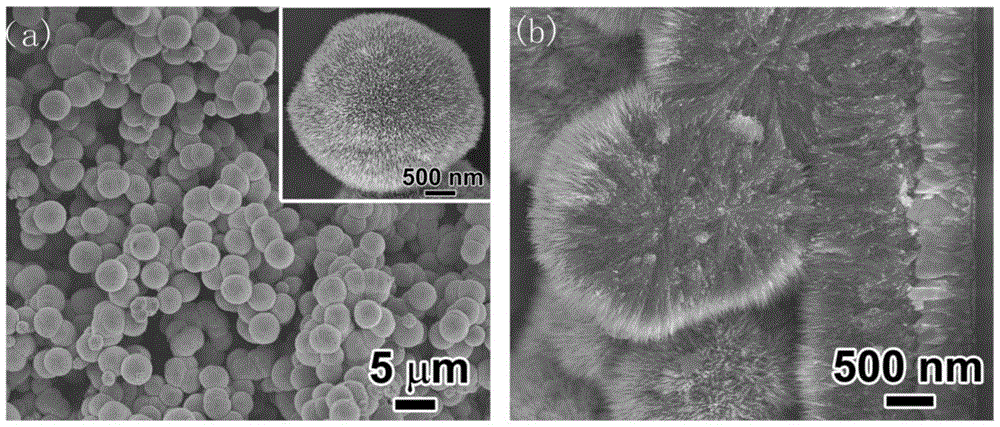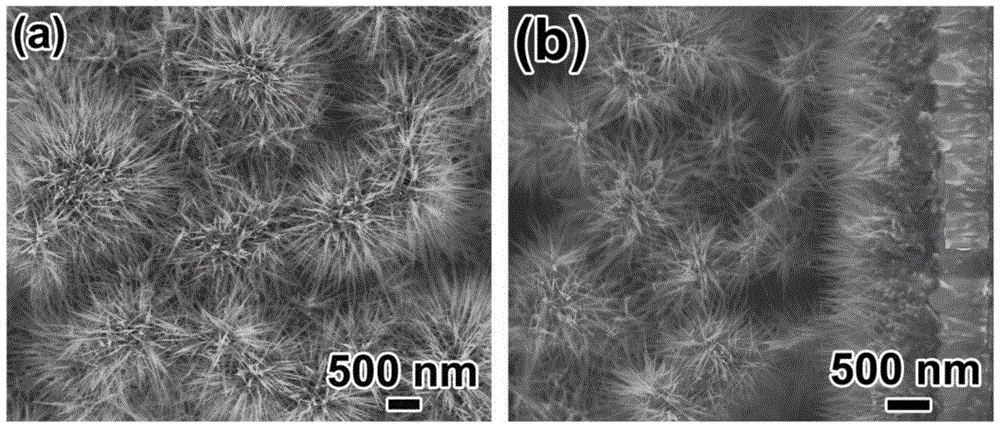Solar cell electrode, preparation method therefor, and solar cell
A solar cell and electrode technology, applied in electrolytic capacitors, circuits, capacitors, etc., can solve the problems that limit the development and application of high-performance solar cells, reduce the amount of dye adsorption, and make it difficult to scatter and absorb visible light with a large specific surface area.
- Summary
- Abstract
- Description
- Claims
- Application Information
AI Technical Summary
Problems solved by technology
Method used
Image
Examples
Embodiment 1
[0035] This embodiment provides a type I double-layer photoelectrode, the thickness of the one-dimensional nanowire array is 1 μm, the diameter of the one-dimensional nanowire is 10 nm, the diameter of the three-dimensional microsphere is 5 μm, and the thickness of the three-dimensional dendritic microsphere structure is 50 μm; Microstructural diagram such as figure 2 as shown, figure 2 (a) is a top view showing the size and stacking form of the upper three-dimensional dendritic nanospheres, figure 2 (b) Interface view, showing the combined morphology of 3D nanospheres and underlying 1D nanowires.
[0036] Follow the steps below to prepare solar cell electrodes:
[0037] (1) Prepare precursor solution: dissolve 1.4g tetraisopropyl titanate in 13.8g concentrated hydrochloric acid;
[0038]Surfactant solution: dissolve 0.25g of cetyltrimethylammonium bromide in 25g of deionized water;
[0039] Hydrolysis inhibitor solution: mix ethylene glycol and deionized water at a vol...
Embodiment 2
[0044] This embodiment provides a type II double-layer photoelectrode, the thickness of the one-dimensional nanowire array is 1 μm, the diameter of the one-dimensional nanowire is 6 nm, the diameter of the three-dimensional microsphere is 3 μm, and the thickness of the three-dimensional dendritic microsphere structure is 40 μm; Microstructural diagram such as image 3 as shown, image 3 (a) is a top view showing the size and stacking form of the upper three-dimensional dendritic nanospheres, image 3 (b) Interface view, showing the combined morphology of 3D nanospheres and underlying 1D nanowires.
[0045] Follow the steps below to prepare solar cell electrodes:
[0046] (1) Prepare precursor solution: dissolve 0.57g tetraisopropyl titanate in 13.8g concentrated hydrochloric acid;
[0047] Surfactant solution: 0.15g of cetyltrimethylammonium bromide was dissolved in 27.3g of deionized water;
[0048] Hydrolysis inhibitor solution: ethylene glycol pure solution;
[0049] M...
Embodiment 3
[0053] This embodiment provides a type III double-layer photoelectrode, the thickness of the one-dimensional nanowire array is 0.5 μm, the diameter of the one-dimensional nanowire is 4 nm, the diameter of the three-dimensional microsphere is 1.5 μm, and the thickness of the three-dimensional dendritic microsphere structure is 40 μm; Its microstructure is shown in Figure 4 as shown, Figure 4 (a) is a top view showing the size and stacking form of the upper three-dimensional dendritic nanospheres, Figure 4 (b) Interface view, showing the combined morphology of 3D nanospheres and underlying 1D nanowires.
[0054] Follow the steps below to prepare solar cell electrodes:
[0055] (1) Prepare precursor solution: dissolve 0.45g tetraisopropyl titanate in 13.8g concentrated hydrochloric acid;
[0056] Surfactant solution: 0.15g of cetyltrimethylammonium bromide was dissolved in 27.3g of deionized water;
[0057] Hydrolysis inhibitor solution: mix ethylene glycol and ethanol at ...
PUM
 Login to View More
Login to View More Abstract
Description
Claims
Application Information
 Login to View More
Login to View More - R&D
- Intellectual Property
- Life Sciences
- Materials
- Tech Scout
- Unparalleled Data Quality
- Higher Quality Content
- 60% Fewer Hallucinations
Browse by: Latest US Patents, China's latest patents, Technical Efficacy Thesaurus, Application Domain, Technology Topic, Popular Technical Reports.
© 2025 PatSnap. All rights reserved.Legal|Privacy policy|Modern Slavery Act Transparency Statement|Sitemap|About US| Contact US: help@patsnap.com



